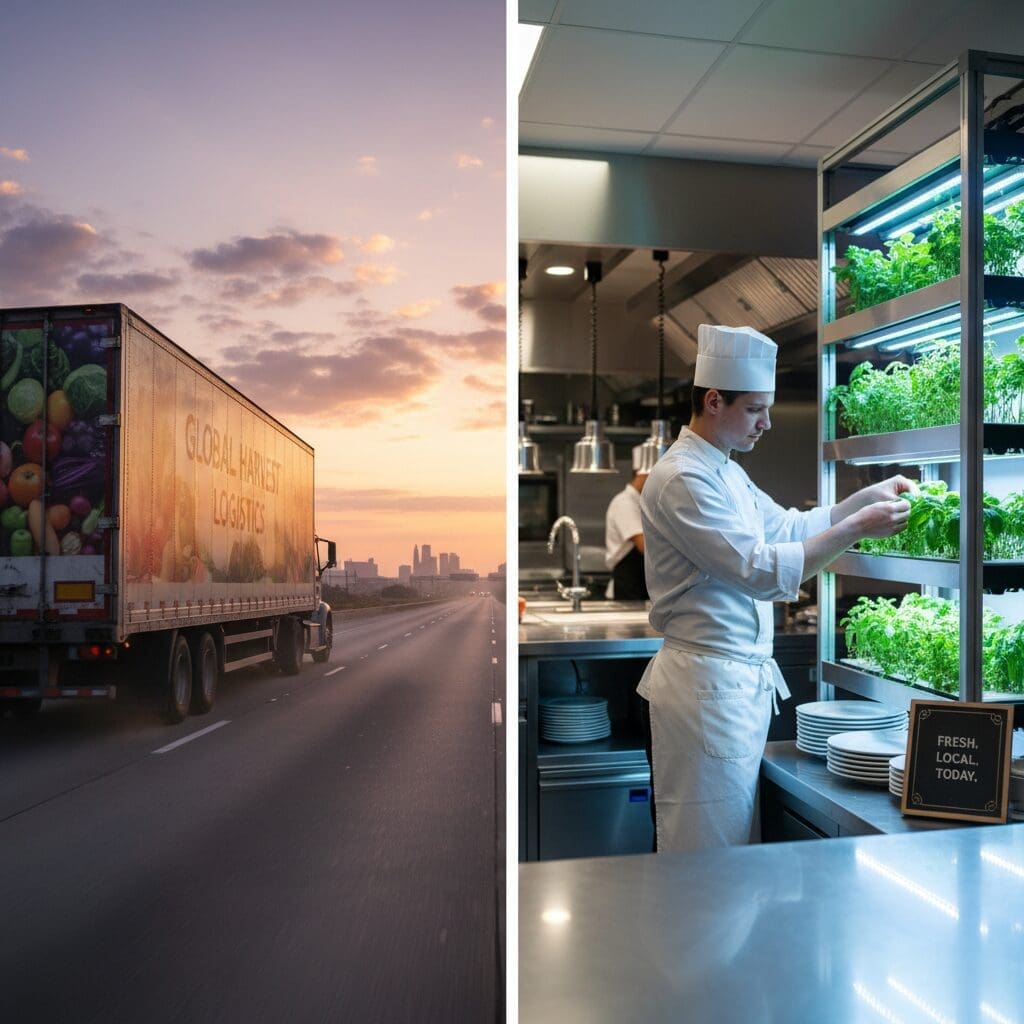The Rise of Vertical Farming: A Sustainable Solution for Urban Food Security

With the global population projected to surpass 9 billion by 2050 and the majority residing in cities, the question of urban food security has never been more critical. Traditional farming methods are constrained by land availability, climate change, and water scarcity.
Enter vertical farming—a groundbreaking agricultural model that brings food production into the heart of urban centers. By growing crops in controlled, stacked environments, this technological marvel promises year-round harvests, drastically reduced water usage, and fresher produce for city dwellers.
This article will explore the inner workings of vertical farming, weigh its significant advantages against its current challenges, and examine its potential to redefine our relationship with food.
What is Vertical Farming? Deconstructing the High-Tech Farm

Vertical farming is a form of controlled environment agriculture (CEA) where plants are grown in vertically stacked layers, often without soil. It utilizes soilless techniques such as hydroponics (using a nutrient-rich water solvent), aquaponics (integrating fish to provide nutrients), or aeroponics (misting plant roots with nutrient solutions).
Instead of natural sunlight, these farms use tailored LED lighting that provides the specific light spectrum plants need for photosynthesis. This allows for precise control over environmental factors like temperature, humidity, and CO2, creating optimal growing conditions 24/7.
The result is a highly efficient, climate-independent system that can produce a wide variety of crops, primarily leafy greens, herbs, and some fruits, in a fraction of the space required by a traditional farm.
The Abundant Harvest: Key Benefits of Growing Upwards

The advantages of vertical farming are transformative. Firstly, it boasts incredible yield per square foot, making it perfect for dense urban landscapes.
Secondly, it is a champion of water conservation, using up to 95% less water than conventional field farming due to recirculation and minimal evaporation. Thirdly, the sealed environment eliminates the need for pesticides and herbicides, leading to cleaner and safer produce.
Furthermore, by situating farms within or near cities, ‘food miles’ are slashed, reducing transportation costs and carbon emissions. This proximity ensures that consumers receive produce at peak freshness, which improves nutritional value and extends shelf life, thereby reducing food waste.
Growing Pains: The Challenges and Future Outlook

Despite its immense potential, vertical farming faces significant hurdles. The primary barrier to entry is the high initial capital investment required for building and equipping these high-tech facilities.
Another major concern is energy consumption. The reliance on powerful LED lighting and climate-control systems results in substantial electricity usage, which can have a large carbon footprint if not powered by renewable energy sources.
Currently, the range of economically viable crops is limited mostly to high-value, fast-growing greens. Staple crops like wheat, corn, and potatoes are not yet feasible.
The future success of vertical farming hinges on technological advancements that lower costs, improve energy efficiency, and expand the variety of crops that can be grown profitably.
Key Takeaways
- Vertical farming is a method of growing crops in stacked layers within a controlled indoor environment.
- Major benefits include massive water savings (up to 95%), year-round production, elimination of pesticides, and reduced transportation emissions.
- The primary challenges are high initial startup costs and significant energy consumption for lighting and climate control.
- It is an ideal complementary solution to traditional farming, specifically for enhancing urban food security and supplying fresh produce locally.
Conclusion
Vertical farming is not a silver bullet that will replace all traditional agriculture. Instead, it is a powerful and necessary tool in our arsenal for building more resilient, sustainable, and secure food systems.
It represents a symbiotic relationship between technology and nature, tailored for the urban environments where most of humanity will live. As innovation continues to drive down costs and improve efficiency, vertical farms are poised to become an integral feature of our cities, ensuring that fresh, nutritious food is always within reach.
The future of food is not just on the horizon; it’s looking up.
